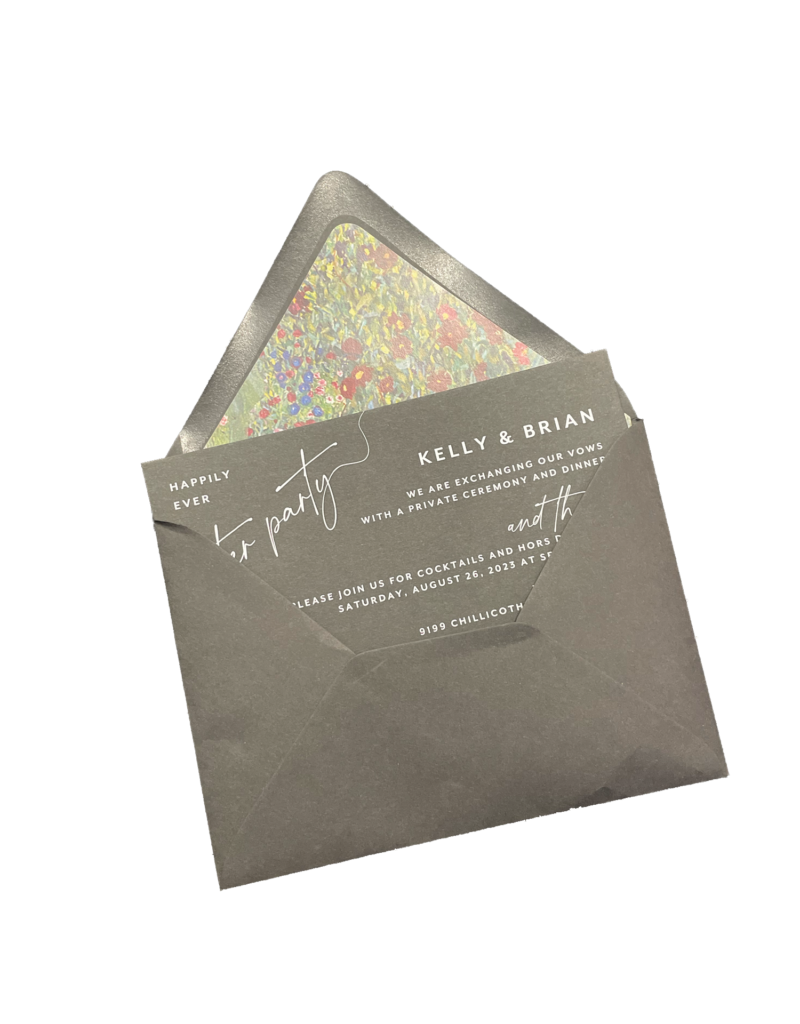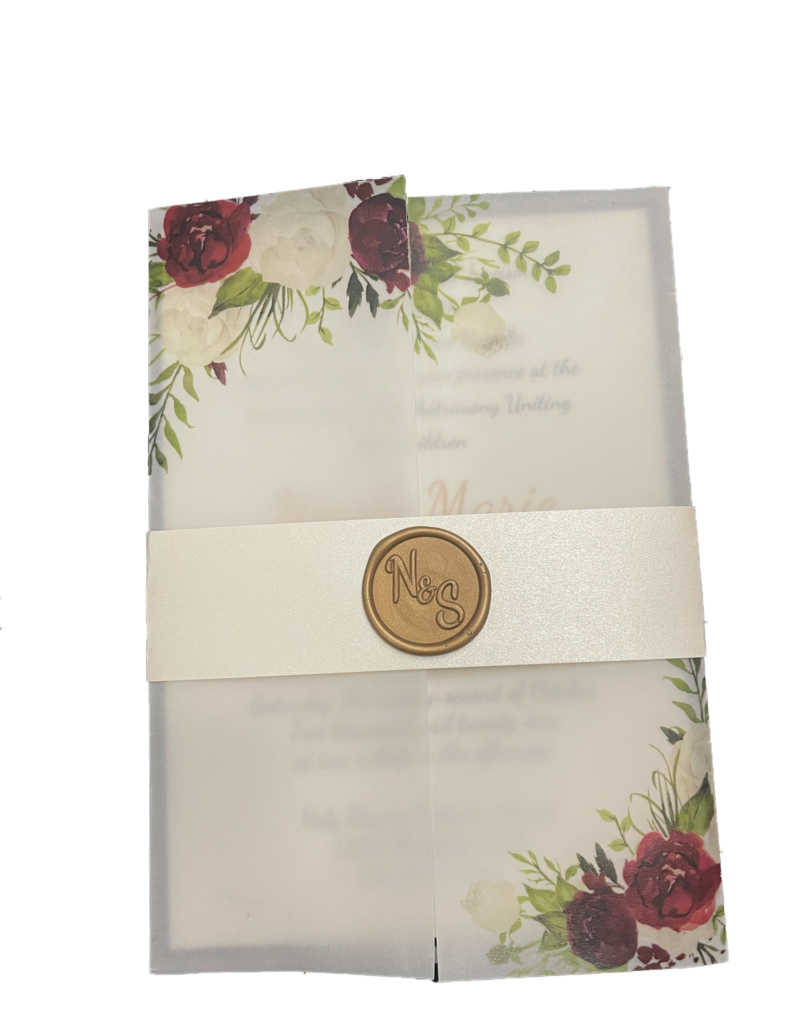
By Abigail Preiszig
Sending out invitations is a crucial part of the wedding planning process. While many couples opt to order them online, websites offer so many stocks, prints and colors to choose from that visualizing the final product may prove difficult.
Working with a wedding invitation professional is an opportunity to narrow down what you want and smooth out all those small details, says Amy Finkenthal, owner of Noteriety Invitations in Beachwood.
“You can touch, you can feel, you get guidance,” Finkenthal says. “You’re seeing actual colors, you’re seeing actual printing processes and you’re not necessarily spending any more money doing that.”
Finkenthal, who has been in the invitation business for 25 years, speaks with Jstyle Weddings about the benefits of visiting an in-person vendor, popular invitation styles and more.
HANDS-ON GUIDANCE
Part of an invitation professional’s job is to help clients’ ideas come to life – even if they can’t perfectly visualize those ideas at the outset.
“Somebody comes to me and if they don’t have a vision for what they want, they probably do and just don’t know it,” Finkenthal says.
She guides them through albums, explores printing processes and pins down what interests them, she explains. From there, they begin the creative process.
“A lot of people like to start a year out,” Finkenthal says. “It’s a process. Not everybody necessarily picks out something the first time they come, sometimes they have to narrow it down.”
To ensure customers choose something they love, she allows them to take home samples. Once they have an idea of what they want, she creates a mock-up. “You can do an invitation and think you have it all picked out, but then when it comes, it just isn’t all that you thought it would be so you may want to tweak it,” Finkenthal says.

TRENDS AND STYLES
“For wedding invitations, people stay fairly traditional,” Finkenthal says. “A lot of it’s about the stock and the printing process.”
She has recently seen an increase in the use of clear acrylic stock, with foil ink, or letter pressing on thick stock for a clean look.
A minimalist, “less is more” approach to invitations is also popular, Finkenthal says. She finds that couples want their names to stand out, so they tend to choose a different font for their names from the rest of the page.
“If they want something more formal, it’s generally a script or calligraphy kind of font,” Finkenthal says.
THE PERFECT INVITATION
The invitation should be clear and concise, with everything guests need to know for the day or weekend of the wedding, she explains. The two items couples tend to forget are detail cards and response cards. Detail cards typically include hotel information, where the couple is registered for gifts and whatever else guests may need to know, while response cards are sent back to the couple to inform them of who is coming.
Finkenthal has seen these simplified to a QR code or link to a website.
“Sometimes it’s just a small little card that says, ‘For additional information visit,’ and then a website (is linked),” Finkenthal says. “Wedding websites now are so big for brides and grooms, and everything is pretty much on there.”
MORE THAN THE INVITES
After the save the dates and invitations are completed, couples should think about thank you cards, food menus, wedding programs, cocktail napkins, seating tags and other paper products and signage that may need to be personalized, Finkenthal notes.
“I don’t try to oversell, but I just make sure that they’re not missing anything,” she says. “It’s just little stuff that people wouldn’t think of that I guide them through.”
